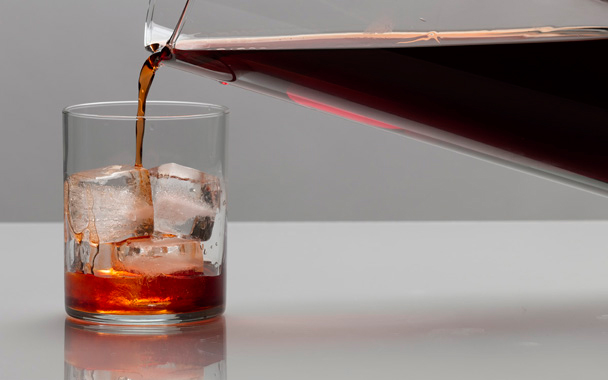Just because the party has moved outdoors, don’t think you have to limit your beverage choices to beer or wine. With a little planning—and a little know-how—you can offer sophisticated libations such as Manhattans, Martinis, and Margaritas. And you don’t have to spend the day mixing drinks—they can be prepared in batches well before your outing and stored in the refrigerator.
In fact, there’s nothing new about premixed cocktails—our forefathers in the mid-19th century favored them as refreshments when they took to the country for the day. Jerry Thomas, the bartender who put together the world’s first cocktail recipe book, How to Mix Drinks or the Bon-Vivant's Companion, in 1862, wrote that “The ‘Cocktail’ is a modern invention, and is generally used on fishing and other sporting parties, although some patients insist that it is good in the morning as a tonic.”
If you take this kind of drink to your next outdoor event, you’ll be able to spend far more time with your patients since they’ll be able to help themselves to whichever potion they desire. Best of all, these drinks are every bit as delicious as the made-to-order variety.
At the bar, cocktails are always stirred or shaken over ice before they are strained into the serving glass, and while everyone is aware that this action cools them down, it also has another important effect—the drinks are diluted by the melting ice. In fact, a well-balanced cocktail is usually made up of a full 25 percent of water from ice. Because these premixed cocktails will be served without benefit of an ice bath, it’s critical that you add bottled water at some point before pouring.
Adapting your favorite cocktail recipe to a premade version is simple: For each quart you’ll need to make 24 ounces of the cocktail, to which you will add 8 ounces of bottled water. To calculate how much of each ingredient to use, first add up the total number of ounces of all the ingredients in the recipe for one drink. Now divide 24 by the total, then multiply the resulting number by the amount of each ingredient in the original recipe. To take a simple example, a gin Martini made with 2 1/2 ounces of gin and 1/2 ounce of dry vermouth has a total of 3 ounces of liquid. Divide 24 by 3 and you get 8. Multiply each original ingredient by 8 and you have your bottled Martinis (20 ounces of gin and 4 ounces of dry vermouth; don’t forget the 8 ounces of water). And if the number you arrive at isn’t an easily measurable amount, round it up or down to the nearest ounce—it's not rock ’n’ rye science.
Once you’ve prepared your premixed cocktails, you can keep the container in the fridge or freezer. The best containers for this are the plastic bottle kits known as Store ’n’ Pour, which most bars use to dispense fruit juices and the like. They are available at restaurant supply stores and on the Internet, have detachable pouring spouts that can be replaced with screw-on caps, making them stackable when not in use. And the pourers and lids are color-coordinated so you can tell at a glance which drink is in which bottle. A word of caution: The bottles have large spouts that pour quickly, so be careful when you start serving your cocktails.
Be sure not to add the bottled water until about 12 hours before service—diluting the alcohol reduces its stabilizing effect on any fruit juices or similar ingredients in your cocktail. After adding the water, though, you’ll want to return the container to the fridge or freezer to chill it as much as possible before taking it outside.
In The Hour, a 1948 book dedicated to that time of day when cocktails are usually imbibed—“the hour of hush and wonder”—Bernard DeVoto writes, “You can no more keep a Martini in the refrigerator than you can keep a kiss there.” I must respectfully disagree. And once you try a bottled Martini, I think that you will, too.
Tippling Tips
· If you make drinks that call for fruit juice as an ingredient, you'll need to shake the bottle well before serving—fruit juice tends to separate.· Drinks with a high alcohol content, such as Manhattans and Martinis, can be stored in the freezer—keep other drinks in the fridge.
· At your party or picnic, keep the containers on ice, just as you would beer or wine.
· Use large ice cubes, preferably from the supermarket or a convenience store—their freezers are typically colder than home models, so your ice will stay frozen longer.

